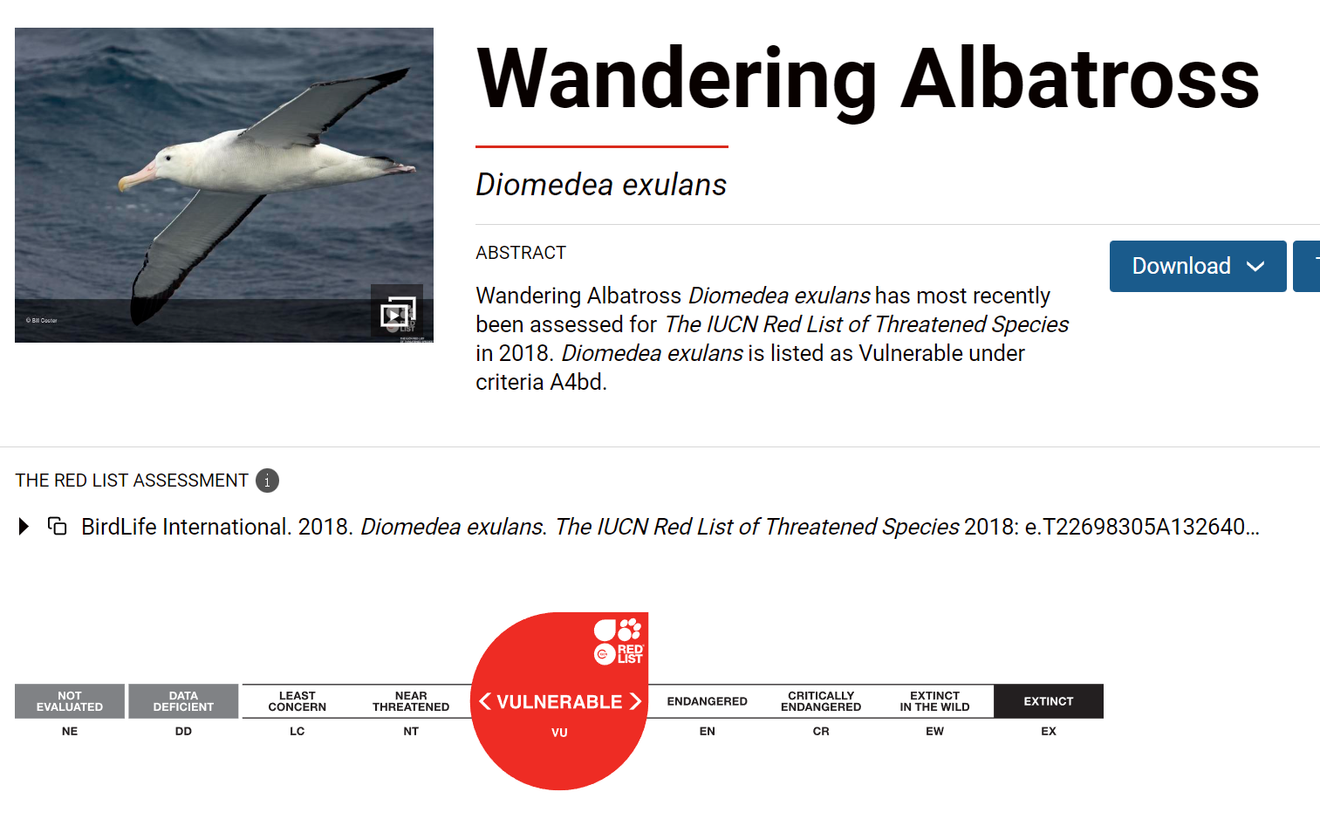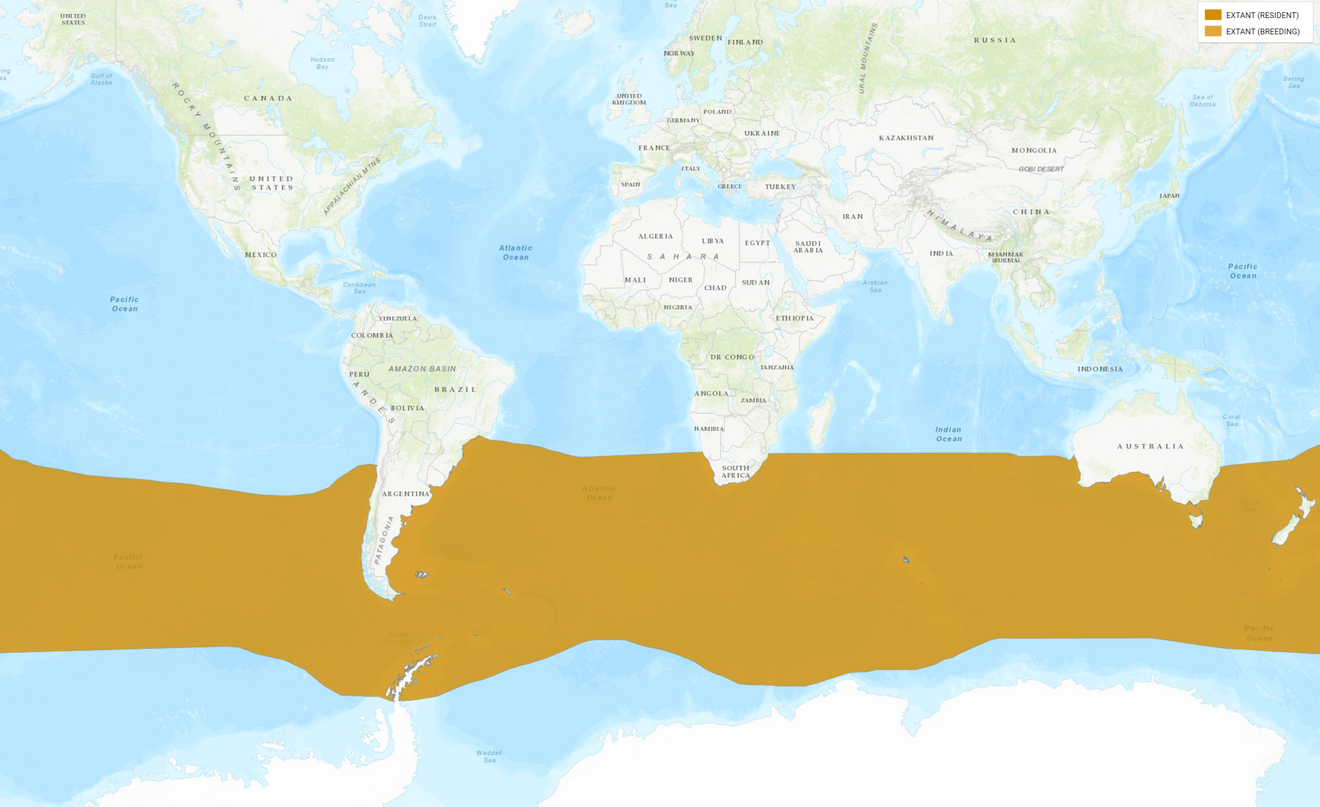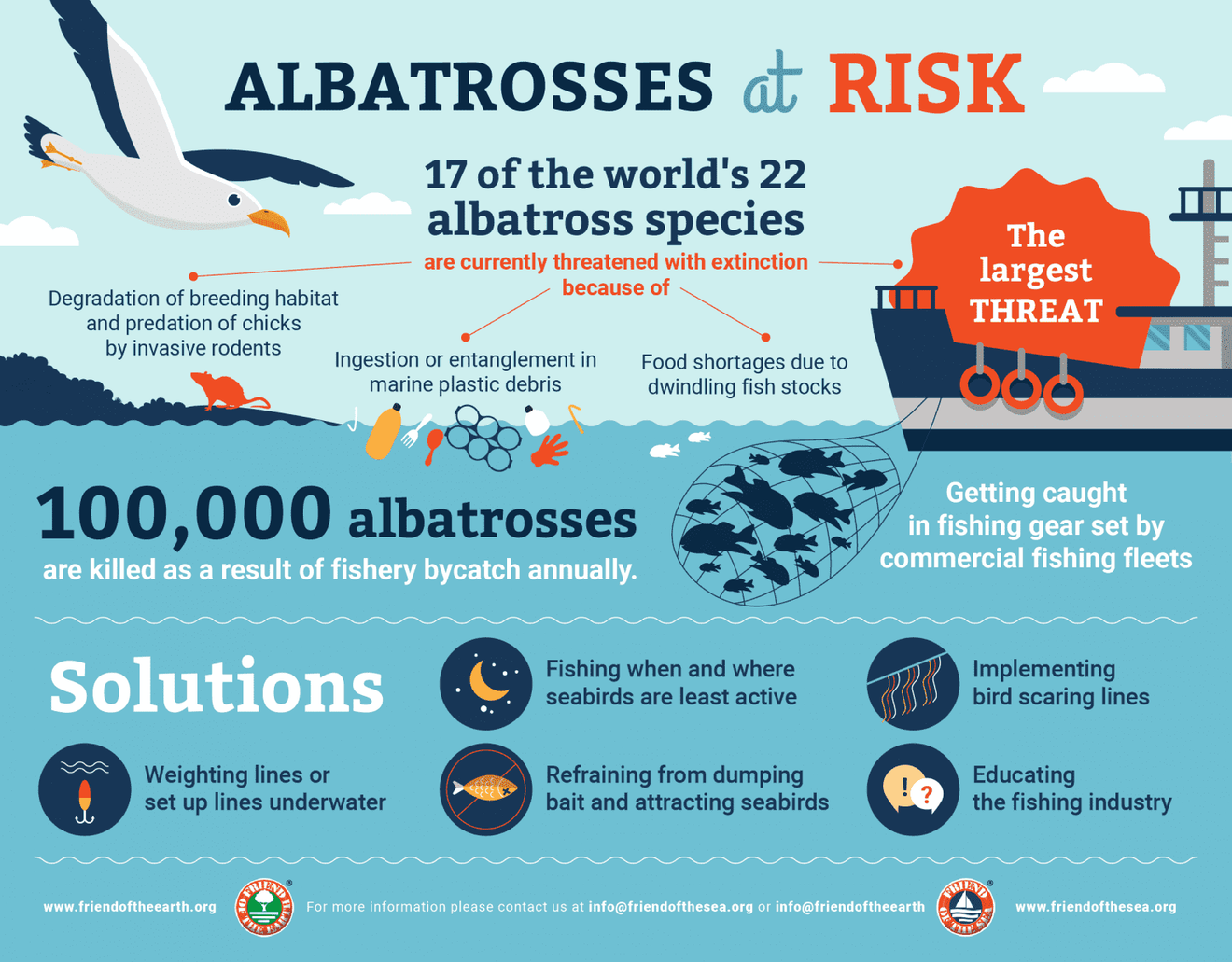Subject
- #Wandering Albatross
- #Ecosystem
- #Endangered Species
- #Largest Bird in the World
- #Albatross
Created: 2024-01-30
Created: 2024-01-30 16:23

IUCN
Have you ever heard of the 'Wandering Albatross' (나그네알바트로스)? You've probably heard of the 'Albatross' bird, haven't you? The Wandering Albatross is also called the 'snowy albatross'. The Wandering Albatross has a body length of about 1m, but its wingspan is a whopping 3.5m, making it a truly enormous bird. This is said to be the largest size among extant birds. Because its wings are large compared to its body, it doesn't take off like ordinary birds; instead, it spreads its wings and runs like it's paragliding, which is a fascinating sight. Albatrosses are typically known for their massive wings, which make it difficult for them to fly normally. However, the Wandering Albatross utilizes its large wings to spend most of its life in flight. It's said that it can fly for 12 days and cover a distance of 6,000km.

IUCN
The Wandering Albatross is a species designated as endangered by the International Union for Conservation of Nature (IUCN). Classified as Vulnerable (VU), the Wandering Albatross faces a high risk of extinction in the wild within months or years. The current population of Wandering Albatrosses is estimated at around 20,000, and the population continues to decline.

IUCN
The Wandering Albatross inhabits the Antarctic region. Polar regions like Antarctica are more sensitive to changes in the Earth's average temperature. The Wandering Albatross is also losing its habitat due to climate change, which is altering its environment. Changes in habitat also affect their food sources. Wandering Albatrosses feed on small fish and crustaceans, but climate change has recently made hunting difficult. Also, since they hunt in the ocean, there's a possibility they might ingest marine debris or accidentally consume microplastics. Moreover, the expansion of human fishing grounds has led to a decrease in the Wandering Albatross's food sources due to large-scale fishing, which is another cause of their endangerment. Large-scale fishing not only reduces their food supply but also poses a threat to the Wandering Albatrosses themselves. Due to their large size, Wandering Albatrosses are prone to getting caught in fishing lines.
However, the Wandering Albatross's large size also aids in conservation efforts. The Wandering Albatross, with its wings spanning over 3m, can be captured in satellite images. The British Antarctic Survey (BAS) and the Royal Society for the Protection of Birds (RSPB) utilize satellite images of the Wandering Albatross to conduct population surveys and research. Wildlife from Space, which conducts satellite image surveys, also applies this method to whales, penguins, and other species for conservation purposes.

World Sustainability Organization
Not only the Wandering Albatross but also other Albatross species are facing extinction. As many as 22 species of Albatrosses are listed on the Red List. The World Sustainability Organization (WSO) is conducting a campaign to protect Albatrosses. It raises awareness about the dangers faced by Albatrosses and suggests protective measures. Since Albatrosses are particularly threatened by fishing activities, it recommends installing lines to prevent Albatrosses from entering fishing areas or advising fishermen to fish when Albatrosses are not active. For Albatrosses that fly close to the surface, it suggests setting fishing lines deep in the ocean or cautions against attracting Albatrosses with fish scraps. We hope that through the collaboration of various environmental groups and fishermen, the Wandering Albatross can continue to soar through the skies for a long time.
Comments0